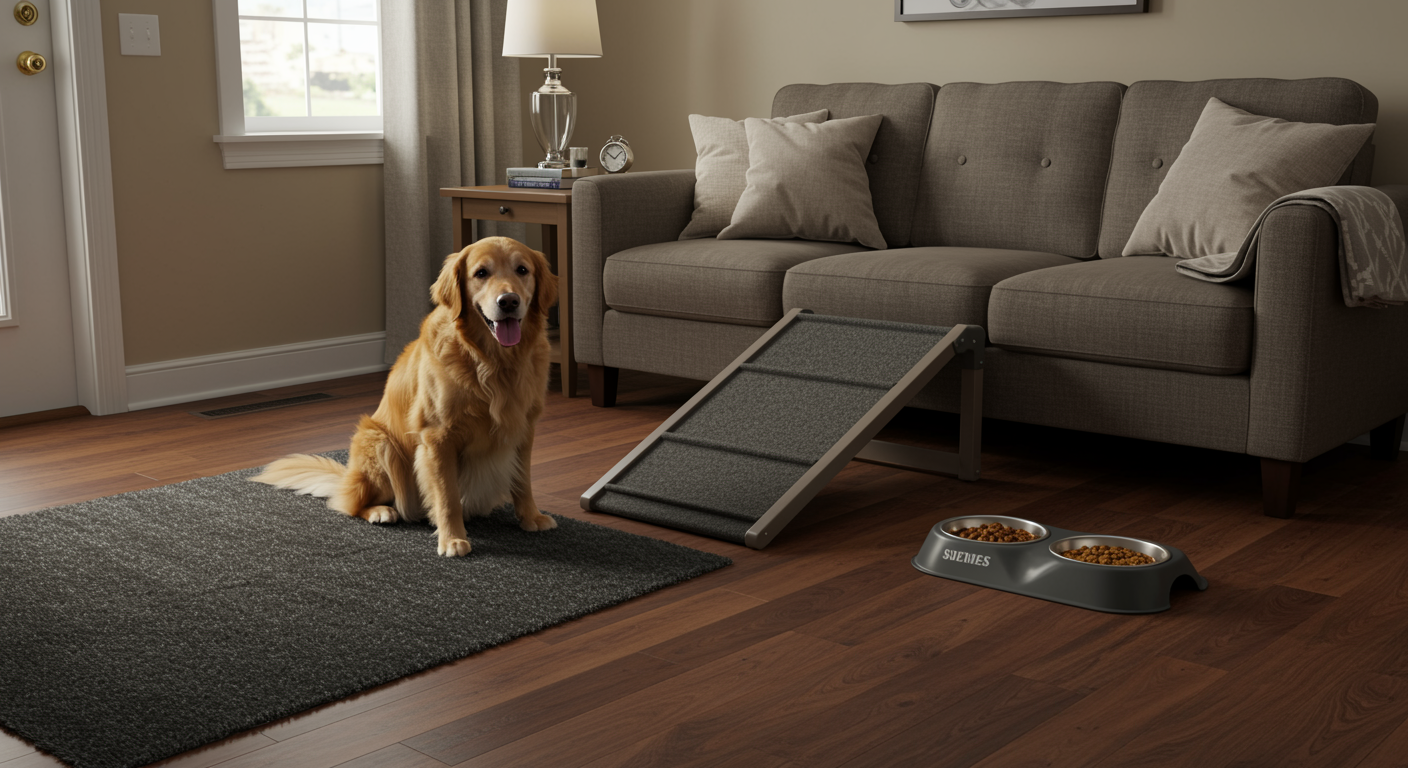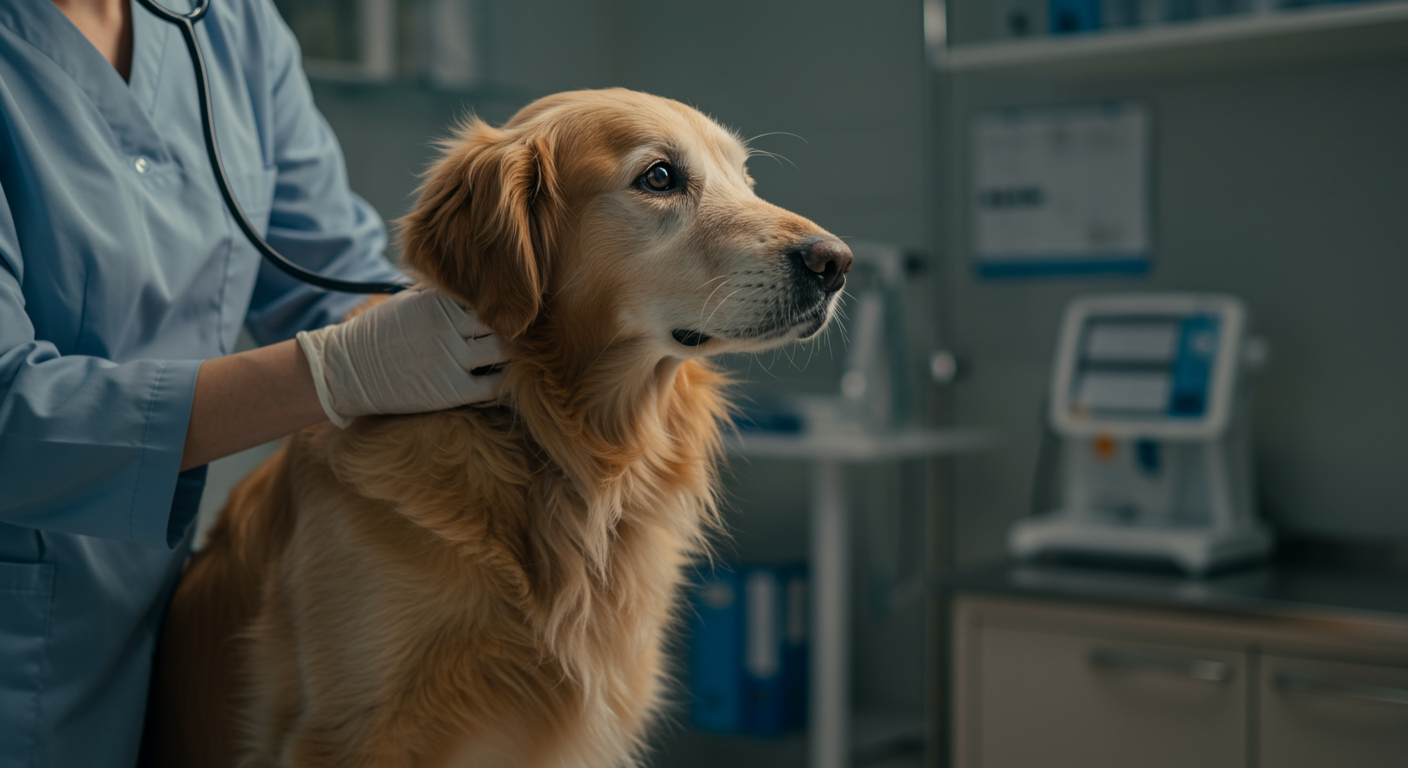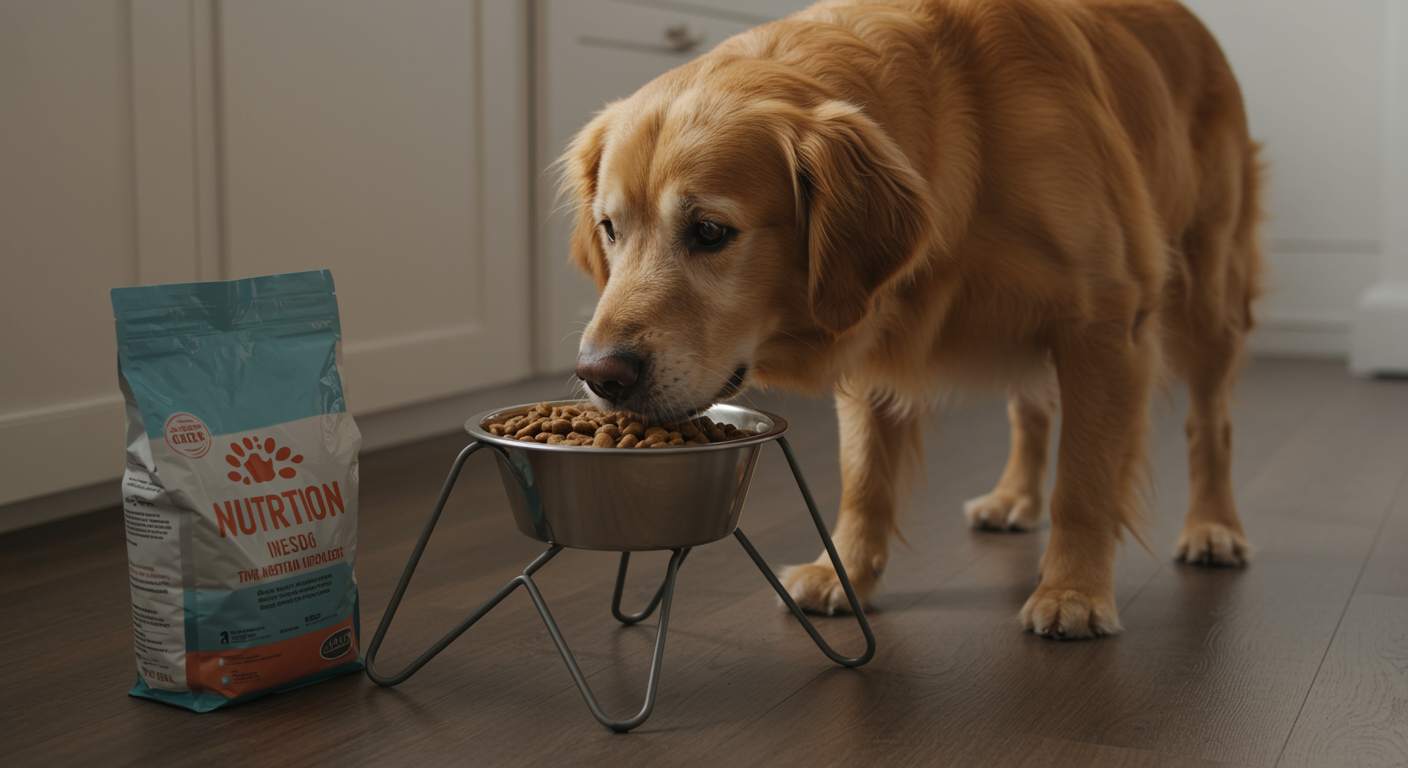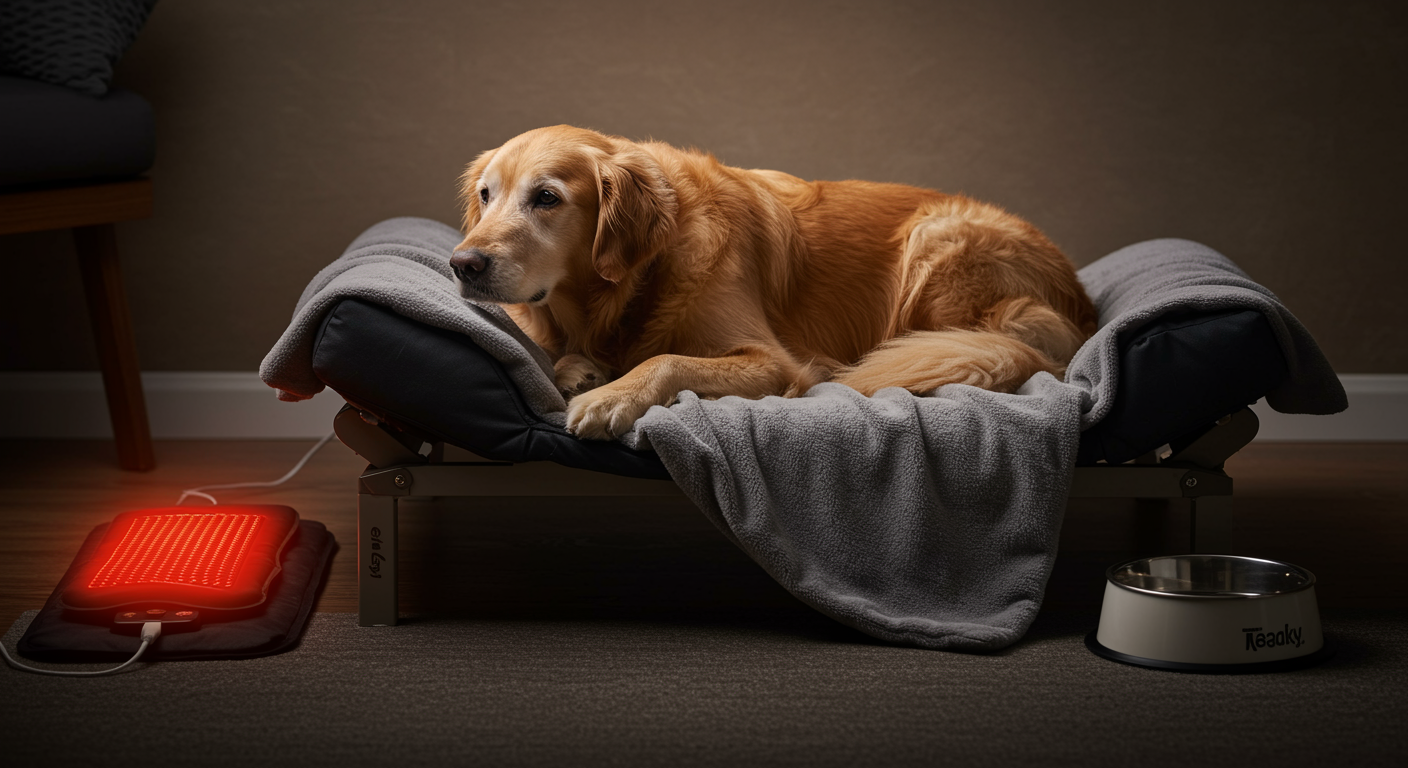Creating a senior-friendly home environment represents one of the most impactful ways to support your Golden Retriever’s comfort, safety, and independence as they navigate their golden years. Unlike younger dogs who can easily adapt to various home configurations, senior Golden Retrievers face unique challenges related to reduced mobility, decreased sensory function, and changing physical capabilities that require thoughtful environmental modifications. A well-adapted home can significantly improve quality of life, reduce injury risks, and help maintain the dignity and confidence that make Golden Retrievers such beloved companions.
The process of adapting your home for a senior Golden Retriever goes far beyond simply adding a few ramps or softer bedding. It requires a comprehensive assessment of your dog’s changing needs, understanding how age-related conditions affect daily activities, and implementing strategic modifications that support both current limitations and anticipated future changes. The goal is creating an environment that compensates for physical limitations while preserving as much independence and normal routine as possible.
Golden Retrievers, known for their adaptability and gentle nature, often struggle silently with environmental challenges as they age. Their stoic temperament means they may not obviously display frustration with obstacles that cause discomfort or difficulty. This makes proactive home adaptation crucial, as waiting for obvious signs of struggle often means your dog has been dealing with challenges for an extended period. Early environmental modifications can prevent problems before they impact quality of life and help maintain the confident, happy demeanor that defines these remarkable dogs.
Understanding Senior Golden Retriever Mobility Challenges
Common Mobility Limitations
Senior Golden Retrievers face predictable mobility challenges that directly impact their interaction with home environments. Understanding these limitations guides effective adaptation strategies.
Joint Stiffness and Arthritis: The most common issue affecting senior Golden Retrievers is joint degeneration, particularly in hips, elbows, and shoulders. This condition causes stiffness after rest, difficulty with stairs, reluctance to jump, and general movement limitations. Joint stiffness is often worse in the morning or during cold weather, requiring environmental accommodations that reduce stress on affected joints.
Reduced Muscle Strength: Age-related muscle loss (sarcopenia) affects a dog’s ability to navigate obstacles, maintain balance, and recover from slips or missteps. Weakened rear legs particularly impact a dog’s ability to rise from lying positions, climb stairs, or jump onto furniture. This weakness necessitates environmental modifications that reduce the physical demands of daily activities.
Balance and Coordination Changes: Neurological changes associated with aging can affect proprioception—the body’s awareness of its position in space. This may manifest as difficulty navigating stairs, reluctance to walk on uneven surfaces, or increased clumsiness around familiar obstacles. Environmental modifications must account for these balance challenges to prevent falls and maintain confidence.
Decreased Flexibility: Reduced range of motion in joints affects how senior Golden Retrievers move through spaces and position themselves for daily activities. They may have difficulty turning in tight spaces, looking up or down comfortably, or positioning themselves for eating and drinking. Home modifications should accommodate these flexibility limitations.
Impact on Daily Activities
Navigation Challenges: Senior Golden Retrievers may struggle with previously easy tasks like climbing stairs, jumping into cars, or accessing favorite resting spots. They might avoid certain areas of the home that have become difficult to navigate, leading to reduced territory and potentially increased anxiety.
Comfort-Seeking Behaviors: As joints become stiffer and more painful, dogs naturally seek softer, warmer surfaces for resting. They may abandon previously preferred sleeping spots if they become uncomfortable or difficult to access. Understanding these changing preferences guides bedding and rest area modifications.
Increased Caution: Senior dogs often become more cautious about navigating familiar environments as their physical capabilities change. This caution, while protective, can limit their willingness to engage in normal activities and explore their environment. Environmental modifications should build confidence while ensuring safety.
Comprehensive Home Safety Assessment
Room-by-Room Evaluation
Living Areas: Examine main living spaces for slip hazards, obstacles, and accessibility issues. Look for loose rugs that might cause tripping, smooth floors that could lead to slipping, and furniture arrangements that create narrow passages difficult for arthritic dogs to navigate.
Kitchen and Dining Areas: Assess food and water station accessibility, floor surfaces around eating areas, and potential hazards from spills or dropped items. Consider whether your dog can comfortably reach their bowls and whether the eating position causes strain on neck or joints.
Bedrooms: Evaluate sleeping areas for comfort and accessibility. Determine whether your senior Golden Retriever can still access their preferred sleeping spots and whether current bedding provides adequate support for aging joints.
Bathrooms: Consider whether your dog needs access to these areas and ensure safe passage if they do. Smooth bathroom floors can be particularly hazardous for dogs with mobility issues.
Stairs and Hallways: These transitional spaces often present the greatest challenges for senior dogs. Assess stair safety, lighting adequacy, and whether alternatives to stair use are feasible.
Hazard Identification Checklist
Slip and Fall Risks:
- Smooth flooring without adequate traction
- Loose or wrinkled area rugs
- Wet surfaces from spills or weather
- Uneven transitions between flooring types
- Poor lighting in navigation areas
Obstacle Hazards:
- Furniture with sharp corners at dog height
- Low-hanging objects that might catch a cautious dog
- Clutter in walkways
- Doors that swing into pathways
- Electrical cords across walking areas
Access Difficulties:
- High thresholds between rooms
- Steep stairs without alternatives
- Elevated feeding or sleeping areas
- Narrow passages between furniture
- Heavy doors difficult to push open
Flooring Solutions for Senior Golden Retrievers
Traction Enhancement Strategies
Non-Slip Rug Placement: Strategic placement of non-slip rugs provides traction on smooth surfaces while creating clear pathways through the home. Choose rugs with rubber backing that won’t shift under your dog’s weight, and ensure edges lie flat to prevent tripping hazards.
Textured Floor Treatments: Specialized non-slip treatments can be applied to existing smooth floors to increase traction without major renovation. These treatments are particularly useful in high-traffic areas and around food and water stations.
Yoga Mats as Pathways: High-quality yoga mats provide excellent traction and can be used to create safe pathways on smooth floors. They’re easily cleaned, relatively inexpensive, and can be moved as needed to accommodate changing mobility patterns.
Carpet Runners: Installing carpet runners on hardwood or tile floors creates consistent traction pathways while maintaining the aesthetic appeal of existing flooring. Choose low-pile carpets that won’t catch toenails and secure them properly to prevent movement.
Flooring Material Considerations
Existing Hard Floors: Wood, tile, and laminate floors can be made senior-friendly through strategic modifications rather than complete replacement. Focus on high-traffic areas and places where your dog spends significant time.
Carpet Advantages: Wall-to-wall carpeting provides consistent traction and cushioning for senior dogs. However, it must be kept clean and dry to prevent odor issues if accidents occur. Low-pile carpets are easier to clean and maintain than plush varieties.
Outdoor Surfaces: Decks, patios, and walkways also require attention for senior dog safety. Non-slip treatments, textured surfaces, or strategically placed outdoor rugs can improve traction on potentially slippery outdoor areas.
Accessibility Improvements
Ramp Installation and Design
Ramp Slope Calculations: Proper ramp design is crucial for senior Golden Retriever safety and confidence. The ideal slope is 1:12 (one inch of rise for every twelve inches of length), though gentler slopes are even better for dogs with significant mobility limitations.
Ramp Surface Considerations: Ramp surfaces must provide adequate traction without being rough enough to damage paw pads. Outdoor carpeting, rubber matting, or textured surfaces work well. Raised edges or rails help prevent dogs from stepping off the sides.
Strategic Ramp Placement: Consider ramps for accessing vehicles, navigating porch steps, and reaching elevated areas your dog enjoys. Portable ramps offer flexibility for occasional use, while permanent installations work better for daily navigation needs.
Ramp Training: Senior dogs may need gradual introduction to ramps, especially if they’re hesitant about new surfaces. Start with very low, wide ramps and use treats and encouragement to build confidence.
Stair Modifications
Stair Treads and Grips: Adding non-slip treads to existing stairs significantly improves safety for senior Golden Retrievers. Choose treads that provide good traction without being so textured that they’re uncomfortable for sensitive paw pads.
Lighting Improvements: Adequate lighting on stairs is crucial for senior dogs who may have declining vision. Motion-activated lights ensure good visibility without requiring switches that dogs can’t operate.
Handrails and Barriers: While dogs can’t use handrails directly, they provide stability for owners helping their dogs navigate stairs. Low barriers or rails can also prevent falls if dogs lose their balance.
Stair Alternatives: Consider whether stair use can be eliminated entirely through rearrangement of living spaces or installation of ramps. Block access to unnecessary stairs to prevent unsupervised attempts that might result in falls.
Furniture Access Solutions
Pet Steps and Stairs: Commercial pet steps provide safer alternatives to jumping for accessing furniture, beds, or vehicles. Choose steps with non-slip surfaces and appropriate height increments for your dog’s stride length.
Furniture Ramps: Specially designed furniture ramps offer gentler inclines than steps and may be easier for dogs with severe mobility limitations. These work particularly well for bed access and getting into vehicles.
Lowered Furniture Options: Consider lowering bed heights, choosing furniture with lower profiles, or providing floor-level alternatives for dogs who can no longer safely access elevated surfaces.
Assisted Access: Sometimes the best solution is helping your senior Golden Retriever access favorite spots rather than expecting independent navigation. This approach maintains their access to preferred locations while ensuring safety.
Comfort Optimization Strategies
Bedding and Rest Area Enhancement
Orthopedic Bedding Selection: High-quality orthopedic beds with memory foam or other supportive materials help relieve pressure points and support aging joints. Look for beds with removable, washable covers and appropriate thickness for your dog’s size and comfort needs.
Multiple Rest Stations: Senior Golden Retrievers benefit from having comfortable resting options in multiple locations throughout the home. This reduces the need to travel long distances when they want to rest and ensures they always have a comfortable option nearby.
Temperature-Controlled Rest Areas: Senior dogs may be more sensitive to temperature extremes. Provide bedding options that accommodate both warm and cool preferences, such as cooling mats for summer and heated beds for winter.
Easy-Access Bedding: Choose beds that are easy for senior dogs to get into and out of without having to step over high sides. Bolster beds with low entry points or flat beds work well for dogs with mobility limitations.
Climate Control Considerations
Heating Strategies: Senior Golden Retrievers may have difficulty regulating body temperature and often benefit from additional warmth. Space heaters (safely positioned), heated beds, or warm blankets can provide comfort during cold weather.
Cooling Solutions: Conversely, senior dogs may overheat more easily during warm weather. Cooling mats, fans positioned at dog level, and access to cool flooring can help maintain comfort during hot periods.
Humidity Management: Proper humidity levels can affect joint comfort in arthritic dogs. Consider humidifiers in dry conditions or dehumidifiers in excessively humid environments to maintain optimal comfort levels.
Draft Elimination: Senior dogs may be more sensitive to air currents and drafts. Identify and eliminate drafty areas around resting spots to maintain consistent temperatures.
Feeding and Hydration Station Adaptations
Elevated Feeding Solutions
Proper Height Determination: Elevated feeders should position food and water at a height that allows comfortable eating without straining the neck or shoulders. For most Golden Retrievers, this means the bowl rim should be approximately at the level of the dog’s lower chest.
Stability Considerations: Elevated feeders must be stable enough not to tip or slide during use. Look for feeders with non-slip bases and sufficient weight to remain stationary during eating.
Adjustable Options: Some elevated feeders offer height adjustability, allowing you to modify the feeding height as your dog’s needs change with advancing age or changing mobility.
Multiple Station Strategy: Consider providing elevated feeding stations in multiple locations to reduce the distance senior dogs must travel for meals and water, particularly important for dogs with mobility limitations.
Hydration Enhancement
Water Station Multiplication: Senior Golden Retrievers should have easy access to fresh water from multiple locations throughout the home. This is particularly important for dogs taking medications that increase thirst or those with kidney issues requiring increased water intake.
Water Bowl Selection: Choose wide, shallow bowls that are easy for senior dogs to drink from without straining. Non-slip bases prevent bowls from sliding during use, and easy-to-clean materials maintain water freshness.
Water Quality Considerations: Some senior dogs become pickier about water taste or temperature. Consider filtered water or slightly warmed water to encourage adequate hydration in reluctant drinkers.
Automatic Waterers: Continuous-flow water fountains can encourage drinking and ensure constant access to fresh water, particularly beneficial for senior dogs who may not drink adequate amounts from static bowls.
Sensory Accommodation Strategies
Vision Support Modifications
Enhanced Lighting: Senior Golden Retrievers with declining vision benefit from improved lighting throughout the home. Focus on pathway lighting, feeding areas, and transition zones between different flooring types.
Consistent Lighting: Avoid dramatic lighting changes that might confuse dogs with vision problems. Gradual transitions and consistent illumination help maintain confidence in navigation.
Landmark Preservation: Avoid rearranging furniture unnecessarily, as senior dogs with vision problems rely on familiar landmarks for navigation. When changes are necessary, introduce them gradually with guidance and encouragement.
Contrast Enhancement: Use contrasting colors to help define boundaries, steps, and obstacles for dogs with reduced vision. Light-colored rugs on dark floors or vice versa can help define safe pathways.
Hearing Accommodation
Visual Cues: For Golden Retrievers with hearing loss, visual cues become more important for communication. Consider using hand signals, lights, or other visual indicators to get their attention or communicate needs.
Vibration Alerts: Some owners find success with vibration-based communication systems, though these should be introduced carefully and positively to avoid causing anxiety.
Safety Considerations: Dogs with hearing loss may not hear approaching people or potential dangers. Ensure they can see main traffic areas and consider baby gates to prevent access to potentially dangerous areas when unsupervised.
Creating Safe Outdoor Spaces
Yard and Garden Adaptations
Pathway Creation: Establish clear, safe pathways through outdoor spaces using non-slip surfaces, adequate lighting, and removal of obstacles that might cause tripping or confusion.
Fencing and Barriers: Ensure fencing is secure and appropriate for a senior dog’s needs. Some senior dogs may require lower barriers if jumping ability is reduced, while others might need higher barriers if they’ve developed anxiety-driven escape behaviors.
Shade and Shelter: Provide adequate shade and weather protection for senior dogs who may be more sensitive to temperature extremes and weather conditions.
Easy Access Points: Ensure doors and gates are easy for both dogs and owners to navigate. Consider doggy doors appropriate for senior dog mobility levels, or ensure human-operated doors are easily accessible.
Seasonal Outdoor Modifications
Winter Preparations: Ice and snow present particular hazards for senior Golden Retrievers. Maintain clear, treated pathways and consider protective booties for sensitive paw pads.
Summer Adjustments: Provide cooling areas, ensure adequate shade, and consider the temperature of walking surfaces that might burn sensitive paw pads.
Drainage Considerations: Ensure outdoor areas drain properly to prevent puddles and mud that could cause slipping hazards for senior dogs.
Technology Integration for Senior Dog Care
Monitoring and Safety Technology
Camera Systems: Home monitoring cameras allow you to observe your senior Golden Retriever’s movement patterns and identify areas where they might be struggling or avoiding certain areas.
Motion Sensors: Motion-activated lighting systems ensure adequate illumination when your dog moves through the house, particularly important for nighttime navigation.
Temperature Monitoring: Automated temperature control systems help maintain optimal comfort levels for senior dogs who may be more sensitive to temperature fluctuations.
Communication Enhancement
Two-Way Audio Systems: These systems allow communication with your senior dog when you’re away from home, providing comfort and reducing anxiety.
Alert Systems: Some technology solutions can alert you to changes in your dog’s activity patterns that might indicate health or mobility issues.
Implementation Strategies and Timeline
Phased Adaptation Approach
Priority Assessment: Begin with modifications that address the most significant safety concerns and comfort issues. Focus on areas where your dog spends the most time and faces the greatest challenges.
Gradual Introduction: Introduce changes gradually to avoid overwhelming your senior Golden Retriever. Some dogs may be hesitant about new surfaces, equipment, or arrangements and need time to adjust.
Monitoring and Adjustment: Observe how your dog responds to modifications and be prepared to adjust or refine changes based on their acceptance and effectiveness.
Future Planning: Consider modifications that may be needed as your dog’s condition progresses, implementing them gradually rather than waiting for urgent need.
Budget-Friendly Solutions
DIY Options: Many home adaptations can be accomplished with simple, inexpensive materials. Yoga mats, pool noodles for cushioning sharp corners, and homemade ramps can provide effective solutions without significant expense.
Gradual Investment: Prioritize modifications based on immediate need and budget availability. Start with essential safety modifications and add comfort enhancements over time.
Multi-Purpose Solutions: Choose modifications that serve multiple functions or can be adapted for changing needs over time.
Maintaining Quality of Life Through Environmental Design
Creating an adapted home environment for your senior Golden Retriever represents a profound expression of love and commitment to their well-being during their golden years. The process of thoughtfully modifying your living space demonstrates understanding of your dog’s changing needs and dedication to preserving their dignity, comfort, and independence for as long as possible.
The investment in home adaptations pays dividends in improved quality of life, reduced injury risk, and maintained confidence that allows senior Golden Retrievers to continue enjoying their daily routines with minimal frustration or discomfort. A well-adapted home becomes a sanctuary where aging dogs can navigate with confidence, rest comfortably, and continue to participate fully in family life.
Success in home adaptation lies not in implementing every possible modification but in understanding your individual dog’s specific needs and creating targeted solutions that address their unique challenges. Each Golden Retriever ages differently, and their environmental needs will vary based on their specific health conditions, mobility limitations, and personal preferences.
The goal of home adaptation extends beyond simple accommodation to creating an environment that actively supports your senior Golden Retriever’s physical and emotional well-being. When dogs can move confidently through their environment, access their favorite spots, and maintain their normal routines, they retain the dignity and happiness that make their golden years truly golden.
Your commitment to adapting your home for your senior Golden Retriever ensures that their environment supports rather than challenges them as they age. Through thoughtful modifications and ongoing attention to their changing needs, you create a space where your beloved companion can continue to thrive, maintaining the joy, comfort, and security that define the special bond between Golden Retrievers and their devoted families.

Rafael Souza is a digital marketing strategist and lifelong dog enthusiast. Passionate about Golden Retrievers, he shares practical, research-based tips to help owners provide healthier and happier lives for their furry companions.






2 thoughts on “How to Adapt Your Home for a Senior Golden Retriever”